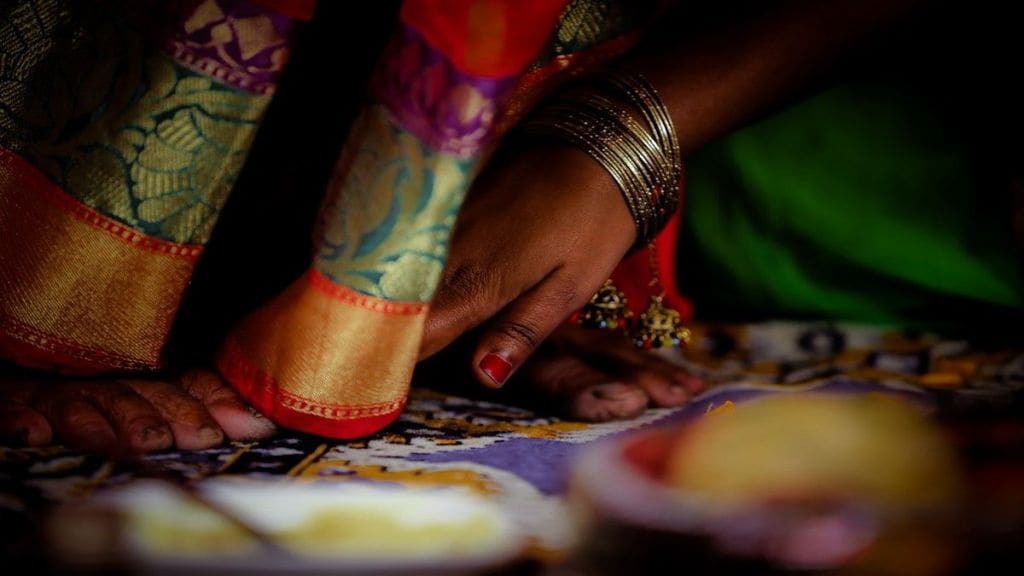The star-studded Anant-Radhika pre-wedding celebrations has become a global sensation. On Sunday, Reliance Foundation Chairperson Nita Ambani dazzled in a handwoven golden Kanchipuram saree. Handcrafted by weavers from South India, the saree is a statement piece showcasing traditional Indian craftsmanship. With the India home textile industry set for a 7-9% revenue jump this fiscal, this kind of showcase is expected to add to the bottomline of the silk weaving sector too.
Understanding the industry dynamics of the Kanjivaram silk saree
Kanchipuram is often called Silk City. India is the second-largest producer of silk in the world. According to a 2023 report by India Brand Equity Foundation, the country’s sericulture industry employs around 9.2 million people in rural and semi-urban areas (as per 2022-23).
According to Tamil Nadu Government data, there are nearly 60,000 silk looms in operation in Kanchipuram and annual turnover of the town exceeds Rs. 200 crore. Exports account for nearly Rs 3 crore.
In FY23, India produced 36,582 metric tonnes (MT) of silk. The total silk production in India during 2021-2022 was 34,903 MT, an increase of 3.4% YoY over the previous year (33,770 MT), the Brand Equity Foundation,report highlighted. This is particularly encouraging given the fact that the home weaving sector saw a 15% drop in revenues in the same fiscal. According to a Crisil study in Q3FY24, the looms are set to see better times ahead.The weaving industry is nearing the end of nearly almost Rs 4,000 crore capital expenditure (capex) cycle. This was between FY22-FY24. Healthy cash accrual coupled with stable debt metrics is set to add filip to growth outlook.
Silk Production- Regional breakup
In India, the share of mulberry production is the largest among other types of silk produced. The major silk-producing states in the country are Andhra Pradesh, Assam, Bihar, Gujarat, Jammu & Kashmir, Karnataka, Chhattisgarh, Maharashtra, Tamil Nadu, Uttar Pradesh, and West Bengal.
Meanwhile, Karnataka contributed around 32.3 percent of the total silk production in the country during 2022-23. This was followed by Andhra Pradesh which had a share of 26.0% in the overall silk production during 2022-23.
Indian silks are in high demand across the world and the country exports silk products to more than 30 countries. Some of the top importers were the USA, UAE, China, UK, Australia, Italy, Germany, France, Spain, Canada, Malaysia, and Nepal during 2022-23.
Over the years, the government also introduced major schemes like the Tribal Sub-Plan (TSP) and Silk Samagra and Scheduled Caste Sub-Plan (SCSP) for the development and growth of the silk industry in India.
What are some of the recent trends in the silk industry?
As the Kanjeevaram sarees are woven from pure mulberry silk which is a premium-quality silk, the sarees are expensive. Usually, the price of the Kanjivaram saree starts from around Rs. 12,000.
As the quality, design, and weaving increase, the price of the saree increases and can cost up to Rs. 5 lakh.
Interestingly, the origins of Kanjivaram sarees, also known as Kanchipuram sarees, can be traced back to Hindu mythology. According to legend, the Kanchi Silk Weaver is a descendant of Sage Marcanda, known as the Gods’ Master Weaver.
Reportedly, the Kanchipuram Saree weaves date back 400 years and are located in the little town of Kanchipuram (Tamil Nadu). It is noteworthy that the sarees are compared to the Benarsi Saree as it has thick fabric and bright gold colours. This saree can be an ideal choice for formal gatherings and celebrations.
How is the Kanjivaram saree made?
The Kanjivaram saree is weaved with pure mulberry silk. The silk thread is steeped in rice water and dried in the sun to increase thickness and rigidity before use. Then, the weavers use the silk thread with a fine silver wire and finish it with the gold thread to complete the technique.
To make it robust, the saree used to weave this fabric includes 240 holes in the warp and around 60 holes in the weft with 250-3000 threads.
Meanwhile, the saree’s pallu, border, and body are knitted individually. Later it is stitched together in a precise manner giving the Kanchipuram saree its traditional look.
Initially, the Kanjivaram saree used to be woven in a 9-yard weave but now for practical purposes, 6-yard weaves have been introduced throughout time. Additionally, in some cases, metal or copper shavings have replaced gold and silver shavings to maintain the texture’s luster and lower expenses.
To know the authenticity of the saree, it is important to ensure the zari work is genuine.

